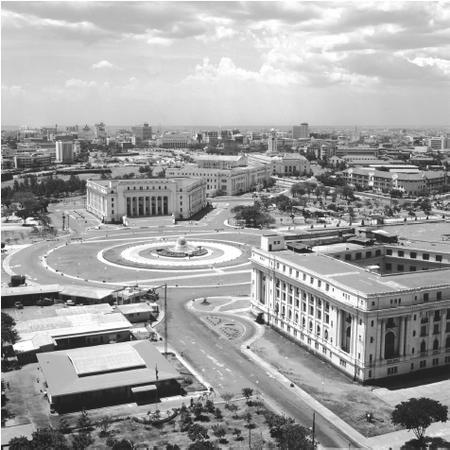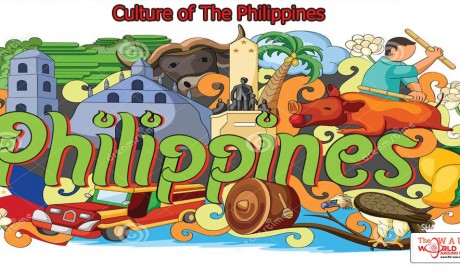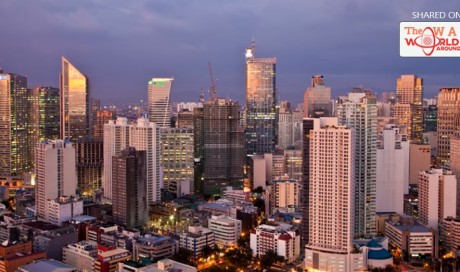Etiquette
People believe that it is one's duty to keep things operating smoothly. It is very important not to lose face. Being corrected or correcting another person in public is not considered acceptable behavior. People want to grant all requests, and so they often say yes when they mean no or maybe. Others understand when the request is not fulfilled because saying no might have caused the individual to lose face. When one is asked to join a family for a meal, the offer must be refused. If the invitation is extended a second time, it is permissible to accept. Time consciousness and time management are not important considerations. A planned meeting may take place later, much later, or never.
Filipinos walk hand in hand or arm in arm with relatives and friends of either sex as a sign of affection or friendship. Women are expected not to cross their legs or drink alcohol in public. Shorts are not common wear for women.
People pride themselves on hospitality. They readily go out of their way to help visitors or take them to their destination. It is of the highest importance to recognize the positions of others and use full titles and full names when introducing or referring to people. Non-verbal language, such as pointing to an object with one's lips, is a key element in communication. One greets friends by lifting the eyebrows. A longer lift can be used to ask a question.
Religion
Religious Beliefs. The Philippines is the only Christian nation in Asia. More than 85 percent of the people are Roman Catholic. The rosary is said in the home at 9 P.M. , just before the family retires for the night. Children are introduced to the statue of "Mama Mary" at a very early age.
Protestant missionaries arrived in 1901 and followed the Catholic example of establishing hospitals, clinics, and private schools. The Church of the Latter Day Saints (Mormons) is currently the most active missionary group.
Sunni Muslims constitute the largest non-Christian group. They live in Mindanao and the Sulu Islands but have migrated to other provinces. Muslim provinces celebrate Islamic religious holidays as legal holidays. Mosques are located in large cities throughout the country. In smaller communities, Muslims gather in small buildings for services. Animism, a belief that natural objects have souls, is the oldest religion in the country, practiced by indigenous peoples in the mountains of Luzon.
Freedom of religion is guaranteed by the constitution. The disagreement between the Muslim population of the southern provinces and the federal government is not so much about religion as it is about political goals. Non-Catholics do not object to Catholic symbols or prayer in public venues.
Each barangay has a patron saint. The saint's day is celebrated by a fiesta that includes a religious ceremony. Large amounts of food are served at each house. Friends and relatives from other barangays are invited and go from house to house to enjoy the food. A talent show, beauty contest, and dance are part of the fun. Carnival rides and bingo games add to the festivities.
Religious Practitioners. Religious leaders are powerful figures. Business and political leaders court Cardinal Jaime Sin because of his influence with much of the population. Local priest and ministers are so highly respected that requests from them take on the power of mandates. A family considers having a son or daughter with a religious career as a high honor. Personal friendships with priests, ministers, and nuns are prized. Clerics take an active role in the secular world. An example is Brother Andrew Gonzales, the current secretary of DECS.
Faith healers cure illness by prayer or touch. "Psychic" healers operate without using scalpels or drawing blood. The several thousand healers are Christians. They believe that if they ask for a fee, their power will disappear. Patients are generous with gifts because healers are greatly respected.
Rituals and Holy Places. The major rituals are customary Christian or Muslim practices. Sites where miracles have taken place draw large crowds on Sundays and feast days. Easter is the most important Christian observance. On Easter weekend, the entire Christian area of the country is shut down from noon on Maundy Thursday until the morning of Black Saturday. International flights continue and hospitals are open, but national television broadcasts, church services, and shops and restaurants are closed and public transportation is sparse. People stay at home or go to church. Special events take place on Good Friday. There are religious processions such as a parade of the statues of saints throughout the community.
Death and the Afterlife. A twenty-four-hour vigil is held at the deceased person's home, and the body is escorted to the cemetery after the religious ceremony. The tradition is for mourners to walk behind the coffin. A mausoleum is built during the lifetime of the user. The size of the edifice indicates the position of the builder.
Mourning is worn for six weeks after the death of a family member. It may consists of a black pin worn on the blouse or shirt of the mourner or black clothing. Mourning is put aside after one year. A meal or party is provided for family members and close friends one year after the burial to commemorate recognize the memory of the deceased.
All Saint's Day (1 November) is a national holiday to honor the dead. Grave sites are cleared of debris and repaired. Families meet at the cemetery and stay throughout the twenty-four hours. Candles and flowers are placed on the graves. Food and memories are shared, and prayers are offered for the souls of the dead. When a family member visits a grave during the year, pebbles are placed on the grave to indicate that the deceased has been remembered.

...[ Continue to next page ]
Share This Post









